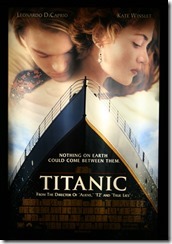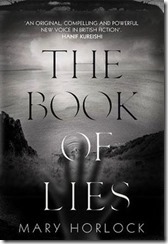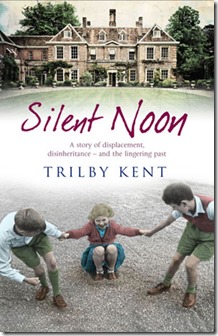You can’t go back to a place that no longer exists. – Trilby Kent, Silent Noon
When I agreed to review this book I was labouring under the impression that it was a YA novel. The mistake was completely mine because nowhere in the press release does it say that it’s aimed at young adults despite focusing on the lives of three teenagers. Perhaps what got me thinking that way is the way the book was presented:
A new novel from the winner of the Canadian Children's Literature Award for her novel Stones for My Father which also won the Africana Children's Book of the Year award in 2012. Silent Noon has also 14-15 years old protagonists...
On reading this I assumed the book was aimed at fourteen- and fifteen-year-olds but it’s really not although, that said, I guess it depends on your fourteen- or fifteen-year-old. My gut feeling is that the book would be a bit too … ‘subtle’ is the word I kept coming back to as I was reading this book, but I think perhaps ‘understated’ might be a better choice. On the surface we have a set up for an Enid Blyton-style adventure: an island, a creepy old school, a triumvirate of young amateur detectives and more secrets than I would know where to start listing; there’s even some ginger beer. Of course had it been written by Enid Blyton it would probably have been called The Mystery of Lindsey Island rather than Silent Noon which isn’t in my opinion a very memorable title. After the book’s climax there are silences everywhere but you have to cover a lot of ground before you get there. It seems, however, much thought went into the title. Trilby told me:
We struggled with the title for ages. At first it had been The Peppermill, then The Devil's Purse. Silent Noon was deemed more reflective of the tone and content, and I have to say I like the way it inverts what is known as a love poem – there's actually a lot more ambivalence and sadness in the Rossetti text, I think, than we often remember.
The poem she’s referring to is this one:
Silent Noon
Your hands lie open in the long fresh grass, —
The finger-points look through like rosy blooms:
Your eyes smile peace. The pasture gleams and glooms
'Neath billowing skies that scatter and amass.
All round our nest, far as the eye can pass,
Are golden kingcup-fields with silver edge
Where the cow-parsley skirts the hawthorn-hedge.
'Tis visible silence, still as the hour-glass.
Deep in the sun-searched growths the dragon-fly
Hangs like a blue thread loosened from the sky: —
So this wing'd hour is dropt to us from above.
Oh! clasp we to our hearts, for deathless dower,
This close-companioned inarticulate hour
When twofold silence was the song of love.
Dante Gabriel Rossetti
Having read the book I can maybe see why she—and, presumably, her editor—went with this one. I think if I’d been in that room I might’ve argued for The Devil’s Purse though. It depends on what one regards as the novel’s pivotal moment and I really can’t say more without revealing too much. There’s an analysis of the poem here which is quite helpful. The key lines for me are explained here:
In line eight, he says, “’Tis visible silence”. This right here is an oxymoron because silence is not able to be seen. But, this silence is so profound that it is visible. He uses a simile to say that this silence is “still as the hour glass”. This is paradoxical because an hour glass is only still when time runs out. But time never runs out and “Noon” will just continue into another hour.
 That does make sense once you’ve read the book but I’m not sure many will get the Rossetti connection. The novel does lead up to a climax—which I assume takes place at noon (I can’t remember and I haven’t checked)—and after that the book drifts a bit towards its end. That sounds like a criticism but it’s not. The film Titanic doesn’t end when the ship goes down—it could, of course, and there are plenty of films that don’t hang around for any length of time after the climax (we assume everyone gets saved and gets on with their lives)—but the aftermath is also worth exploring at least for a bit and that’s what happens here. Does Barney rise triumphant from the ashes? Is this a character-defining moment or does he get swallowed up by the system? Orwell could feasibly have ended Nineteen Eighty-Four with Winston facing the rat—it would’ve worked—but those extra few pages made all the difference. The comparison between the two books might seem like an odd one at first but it’s less so than you might imagine.
That does make sense once you’ve read the book but I’m not sure many will get the Rossetti connection. The novel does lead up to a climax—which I assume takes place at noon (I can’t remember and I haven’t checked)—and after that the book drifts a bit towards its end. That sounds like a criticism but it’s not. The film Titanic doesn’t end when the ship goes down—it could, of course, and there are plenty of films that don’t hang around for any length of time after the climax (we assume everyone gets saved and gets on with their lives)—but the aftermath is also worth exploring at least for a bit and that’s what happens here. Does Barney rise triumphant from the ashes? Is this a character-defining moment or does he get swallowed up by the system? Orwell could feasibly have ended Nineteen Eighty-Four with Winston facing the rat—it would’ve worked—but those extra few pages made all the difference. The comparison between the two books might seem like an odd one at first but it’s less so than you might imagine.
The cover, however, is misleading. The three children in the picture are nothing like the three kids in the book all of whom are frankly troubled teenagers and two of which are overweight. I asked Trilby about this and she responded very much as I expected:
I completely agree with you about the cover. It's a strong image, but to me the kids are far too Call the Midwife, if you know what I mean. But as you rightly say, I had no input and it was presented to me as a done deal – the opinions of the marketing team rule!
The point I want to make is that I started this book with certain expectations and the book didn’t meet them which is not the book’s fault. In fact they worked to its advantage because what I found myself reading was better than I expected. Why that should be the case I’m not sure because I’d read Trilby Kent before—I reviewed her novel Smoke Portrait (now that was a good title) and really enjoyed it—anyway when I was offered two books for July this was the one I picked.
Here’s how the book’s blurb sets you up:
A story of displacement, betrayal – and the lingering past.
September 1953. Fourteen-year-old Barney Holland is promised a fresh start when he is offered a place at a boarding school on the remote North Sea island of Lindsey. Instead, he is shunned by his peers both for his status as a charity pupil and for being the replacement of a recently deceased student, the popular Cray. The arrival of Belinda Flood, a housemaster’s daughter stigmatized by her expulsion from another school, provides Barney with an unexpected ally. Both outsiders soon fall under the influence of charismatic senior pupil Ivor Morrell, who reigns over the forbidden corners of the school.
A gruesome find and the friendship with a local woman rumoured to have been a wartime collaborator draw the three into an increasingly dangerous web of personal and social shame. Gripped by mounting horror at his discovery of secrets harboured by the isolated school community, Barney personifies the struggle of a young peacetime generation finding its way out of the shadow of war.
See what I mean about the three kids on the cover? They just don’t work.
The story covers one term and is told mainly from the perspective of Barney Holland or ‘Camden Town’ as he gets called by some of the other kids although the narrative is written in the third person. He’s the outsider; everybody knows more about the island than he does. The trope is a well-worn one from Tom Brown’s School Days (the genre-founder in many ways although certainly not the first) through to Harry Potter and the Philosopher’s Stone (which breathed new life into the tired old boarding school novel) and although there’s plenty of scope for the novel to fall back on familiar and comfortable clichés (midnight feasts, pranks, bullying—there’s a scene in the book that reminded me of the infamous roasting episode from Tom Brown’s School Days) Trilby doesn’t do too bad a job of presenting a story that’s historically viable—she’s always been big on research—without it becoming caricatured; this is how people spoke and behaved back then so just sit back and enjoy it for what it is.
Lindsey Island, where Carding House School is located, was occupied by the Germans during World War II. One of his dad’s friends tells Barney, when they’d found he’d been offered a last minute place:
We ditched them in the war … Two weeks later, in come the Jerries, and they don’t leave until ’45. Right bastards they were, too.
 A while ago I reviewed The Book of Lies by Mary Horlock which was set on Guernsey. During World War II the only British territories to be occupied by the Germans were the Channel Islands and the only permanently inhabited islands are Jersey, Guernsey, Alderney, Sark, Herm, Jethou, Brecqhou and Lihou so I’m not sure where Lindsey Island is but I can only assume it’s fictitious. Lindsey is a real place—it’s situated in north Lincolnshire—and its origins date back to Anglo-Saxon days. The name Lindsey means the 'island of Lincoln': it was surrounded by water and very wet land but it’s still very much a part of mainland Britain which, as we love reminding people, was never occupied during the war. St Just, the other island mentioned, also came up a blank; St Just is a town—two towns actually—in Cornwall. There are no islands off the coast of Grimsby that I can see.
A while ago I reviewed The Book of Lies by Mary Horlock which was set on Guernsey. During World War II the only British territories to be occupied by the Germans were the Channel Islands and the only permanently inhabited islands are Jersey, Guernsey, Alderney, Sark, Herm, Jethou, Brecqhou and Lihou so I’m not sure where Lindsey Island is but I can only assume it’s fictitious. Lindsey is a real place—it’s situated in north Lincolnshire—and its origins date back to Anglo-Saxon days. The name Lindsey means the 'island of Lincoln': it was surrounded by water and very wet land but it’s still very much a part of mainland Britain which, as we love reminding people, was never occupied during the war. St Just, the other island mentioned, also came up a blank; St Just is a town—two towns actually—in Cornwall. There are no islands off the coast of Grimsby that I can see.
The book is not short on characters and I personally struggled to keep them all in my head.
The staff are Mr Runcie, the housemaster; Mr Pleming, the Headmaster (‘Ratty’); Mr Flood (‘Dolly’), whose daughter Belinda is now being taught along with the boys following some trouble at her last school; Doc Dower, the Maths teacher, who, it was rumoured, was a Japanese POW and Mr Swift, the French master, a former pupil of the school who also coaches the cross-country team and is generally known as a slave driver. There’s a school matron who’s only ever referred to as Matron and the groundsman, the taciturn Pole, Krawiec.
The boys are Barney; Robin Littlejohn, who’s in his set and the boy Mr Runcie assigns to show him the ropes (Barney develops what I’m going to call ‘feelings’ for the boy and I’ll leave it at that); Cowper and Shields who always seem be together; Percy (a.k.a. ‘Weeps’) and Hiram Opie, who’s a little bit ‘simple’ but “too old for primary school and too clever to go in a home”. The bed Barney’s assigned to was Henry Cray’s, a former pupil who died, so he’s told, in a plane crash coming back from holidays. This is how Robin describes their classmates:
“Percy and Cowper are middle-class duffers, like me,” Robin said. “Too thick to pass the common entrance, so our people tell their bourgeois friends they prefer to send us somewhere progressive. “He spoke briskly, bored by the fact of knowing everything. “Shields and Opie are military. They get locked up here because their people are always shuttling between Blighty and Malaysia, or Singapore, or Hong Kong – not like in the old days, where you’d actually get to live somewhere hot if your old man was posted there. You’re scholarship, aren’t you?”
In a letter home Barney outlines the school’s pecking order:
Sagartians are Sixth formers. Below that are Medes and then us Lydians. [He’s in Second Year] Sagartians and Medes can wear any jacket or shoes they like. First formers don’t get called anything.
A number of other boys get mentioned in passing and it’s hard to know who to hang onto as important: the only two of note are Hughes, a boy from another dormitory “whose cheeks were blotched with rosacea”—all Robin has to say about him is that he’s “downright revolting”—and Ivor Morrell who’s two years above Barney; his older brother Jonty was something of a war hero and there’s a plaque in the school chapel in his memory. It is whilst out on his first run that Barney encounters Ivor for the first time; he’s learned that there’s a bunker in the woods that some of the runners use to hide in. Ivor is the second member of the group of misfits that Barney becomes a part of. The third is Belinda Flood who, as the only girl in the school, is naturally not fitting in.
There are mysteries and secrets aplenty: what exactly happened to Cray, where’s Robin’s watch, are there still secret tunnels leading to an old German bunker, why did Krawiec come back from the States, where precisely does Belinda Flood go at night, what exactly did she find wrapped in newspaper and preserved from the elements by a piece of oilcloth in the walled garden by the kitchen and what has any of this to do with Miss Duchâtel and her memoir? And that’s only the tip of the iceberg. Hard to tell at first what the real mystery might be.
In many respects, as with any good detective novel, most of the things we don’t know we really don’t need to know and the important things get swept along with everything else. Time is an important theme in this book although you don’t realise that at first. Had we begun with Barney as an old man looking back that might’ve helped but we don’t and so our realisation of what’s really important creeps up on us. The first page that jumped out at me was page 82 in which we hear a bit about Spike, Barney’s stepdad:
Spike had often told him that things happened in their right order. Spike believed in cycles and spirals and figures of eight, the rhythms of the tides and time recorded in sea rings. According to him, there was very little about life that was linear. He hadn’t cried at his own mother’s funeral, he once told Barney, because human emotions don’t work like that: you feel things at all the wrong times and that’s all right. You remember things out of order, too, but that just means you’re finding a way to make sense of it all. So, when in August the letter had arrived confirming that the school would be delighted to welcome Barney into the Second Form—and would his guardian please see to it that the vaccination checklist was completed as soon as possible—his stepfather had tapped the paper with one finger and said, “You see, Barn? To everything there is a season.”
 I said this book is a boarding school novel and, of course, it is at its heart but it’s also not. I mentioned there’s a scene in the book reminiscent of the one in Tom Brown’s School Days and I asked Trilby about this:
I said this book is a boarding school novel and, of course, it is at its heart but it’s also not. I mentioned there’s a scene in the book reminiscent of the one in Tom Brown’s School Days and I asked Trilby about this:
The roasting scene was entirely intentional – I was thinking of it not as a cliché so much as a tongue-in-cheek reference to the longer tradition of school stories you mention. In some respects I wanted this to be an anti-school story (Barney's ultimate buying-in to the system being not so much a triumph as a weird defeat), but it seemed to me that this could only work if I acknowledged the conventions of the parent genre.
So that’s another thing about this book. You think you’re reading one thing when you’re actually reading something else entirely. This is a book about systems: social, national and political—is the Nineteen Eighty-Four connection starting to make sense? The school and the island are both microcosms of society. Just as the boarding school is a common trope so is the new transfer student. He provides the perfect proxy for us readers: he knows nothing; we know nothing; we learn together. The school, however, is only one group Barney finds himself having to fit in with and that’s what life’s like. That along the way he should lose some friends and have his ideals sullied is just life. And life sucks.
***
 Trilby Kent's first novel for children, Medina Hill, was published by Tundra Books in Canada and the U.S. in October 2009. A second, Stones for My Father, appeared in 2012. Smoke Portrait, her first adult novel, came out in 2011.
Trilby Kent's first novel for children, Medina Hill, was published by Tundra Books in Canada and the U.S. in October 2009. A second, Stones for My Father, appeared in 2012. Smoke Portrait, her first adult novel, came out in 2011.
As an undergraduate at Oxford University (History BA), she chose Special and Further Subjects in the Indian Nationalist Movement and The Middle East in the Age of Justinian. After graduating in 2004, she moved on to the London School of Economics, where she completed an MSc in Social Anthropology. She’s currently working on her PhD.
She has worked as a rare books specialist at a leading auction house and as a freelance journalist contributing investigative, arts and feature writing to the British and Canadian national press and to literary and news publications in America and Europe. In 2010 she was shortlisted for the Guardian's International Development Journalism Competition. Her short fiction has appeared in African American Review and Mslexia, among others.




2 comments:
My local Library set up stands with quick pick books. Silent Noon was one of them. I did not know the author nor had I read anything about this book. It was a surprisingly engaging choice. Really wanted it to be a real place as it was very believable. Should mention that I am 70 so the period is one in which I grew up.
Thanks for leaving that comment, Lyn. It’s always a lovely thing when a book meets its ideal reader. Did you notice that I also reviewed Trilby’s novel Smoke Portrait? I seem to recall liking that one better.
Post a Comment